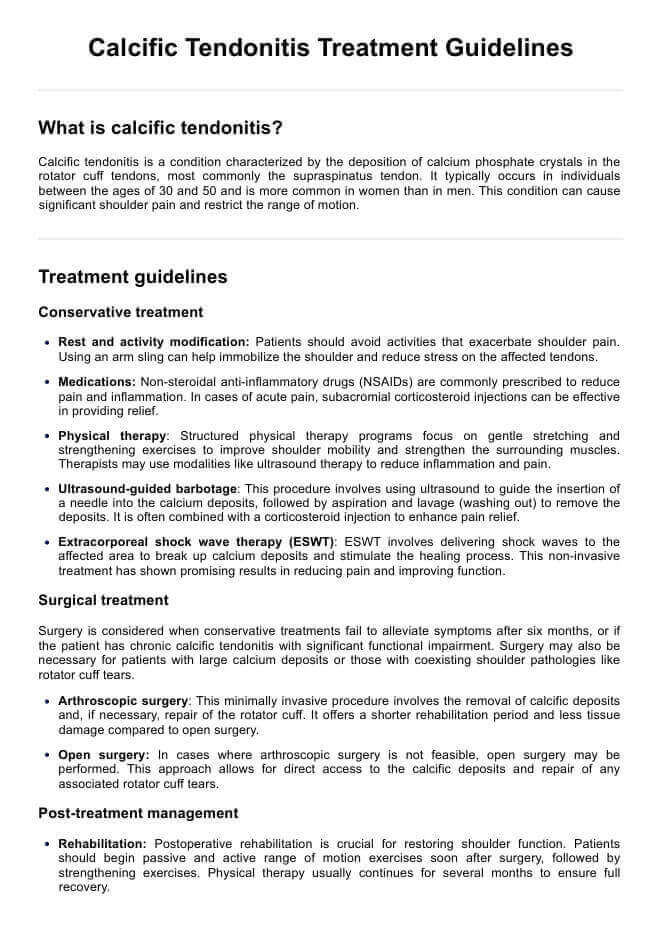Calcific tendonitis can be very painful and limit shoulder range of motion, but it is often treatable with conservative methods or surgery if needed.

Calcific Tendonitis Treatment Guidelines Handout
Calcific tendonitis treatment guidelines: Discover management strategies, from conservative treatment to surgical options, for effective shoulder pain relief.
Use Template
Calcific Tendonitis Treatment Guidelines Handout Template
Commonly asked questions
The best treatment depends on the severity; options include physical therapy, NSAIDs, corticosteroid injections, ultrasound-guided needling, and surgery.
Calcium deposits can be broken up using techniques like ultrasound-guided needling, extracorporeal shock wave therapy (ESWT), or surgically removed if necessary.
EHR and practice management software
Get started for free
*No credit card required
Free
$0/usd
Unlimited clients
Telehealth
1GB of storage
Client portal text
Automated billing and online payments











